Old faces, new times. Stakeholder mapping at International Riversymposium 2018 (Sydney, Australia)
Simon Costanzo ·This October 2018, I attended the 21st International Riversymposium, continuing a long-standing tradition of presIANce at this meeting on river science and management. In fact, I recall the very first Riversymposium held in Brisbane in 1998 way back when I was still a student studying the very river system that is the namesake of the annual conference. Since those days much has changed for the conference, the Brisbane River, and Moreton Bay…. all for the better. The conference has grown in size and stature and is now truly an “international” symposium, having been held overseas and attracting delegates from all round the world. The Brisbane River—which flows into Moreton Bay--has also seen tremendous changes over the past two decades. Gone are the knee-deep algal blooms on beaches, gravel dredges working the river, and sewage-rich waters. Now the river is very much the soul of Brisbane, hosting high speed ferries (City Cats), flotillas of rowing teams, an annual celebration of the river, and even me, now happily married with two wonderful children and living on its banks at St. Lucia. After seven years of living on the shore of the Chesapeake Bay in Maryland, it’s great to keep my close connection to the water.
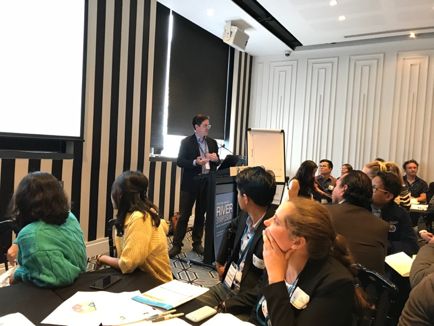

I was joined at this year’s conference in Sydney, Australia, by some usual suspects: Bill Dennison and Heath Kelsey. Together we partnered with Declan Hearne from the International Water Center in Brisbane to run an interactive workshop on stakeholder engagement theory and techniques that was far more popular than anticipated. Hoping at least 12 people would show up to represent the 12 stakeholders we needed role-played, we ended up having to improvise with more than 60 participants. It was great! Each participant was assigned an avatar representing an imaginary stakeholder in a river basin (we used the Asia-Pacific Riverprize winner, the Pasig River in the Philippines, as our river basin) and was required to develop river basin indicators and scores first in isolation, and then as a group, to demonstrate how broad stakeholder involvement improves the legitimacy of report cards and builds relationships. Stakeholder mapping and engagement has become quite a large element in all aspects of our work making our products and impact more tangible for us and those that work with us.
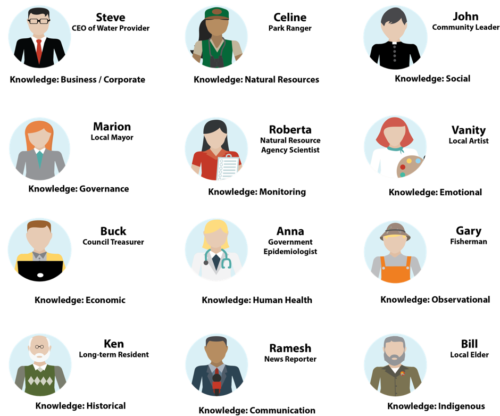
Each avatar was required to identify where they felt they fitted on a plot of influence (in terms of ability to influence change in river basin management) versus interest (in how a river is used and managed). Then, depending on which quadrant they identified with, they were split up and asked to develop and score indicators for the six categories we promote be evaluated when assessing river basin health: 1) Water quality and quantity; 2) Ecological; 3) Human health and nutrition; 4) Management and governance; 5) Economic; and 6) Social and cultural. If they felt they could not choose or score indicators based on their avatar’s background, they were asked to leave that part of the scoring wheel blank. Following this initial exercise, the 12 avatars from all quadrants regrouped and completed the exercise again using their combined skills, experience, and backgrounds.
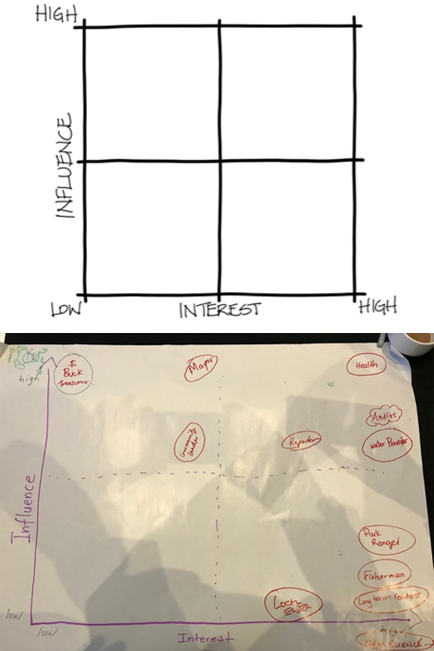
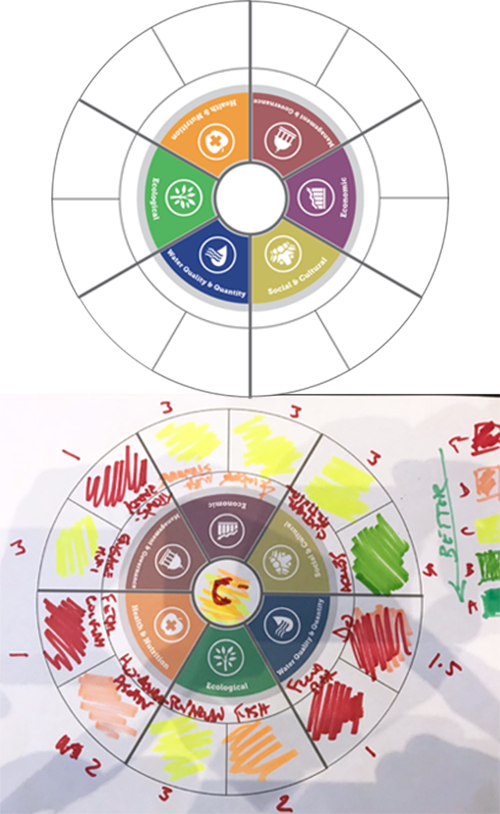
The exercise showed the importance of engaging a diverse set of stakeholders and of not limiting stakeholder selection to those with high influence and high interest. It also showed that the report card process is useful in shifting people from the “not-interested” category to the “interested” category, of whom can then apply pressure on those with influence to make a change for the better.
We were joined by two IAN alumni, Ben Longstaff (Lake Simcoe Region Conservation Authority in Canada) and Jane Thomas (NESP Northern Australia Environmental Resources Hub), who also helped facilitate the workshop. It was great to see so many familiar faces.
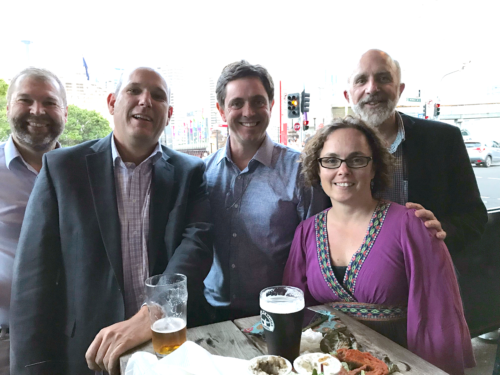
About the author
Simon Costanzo
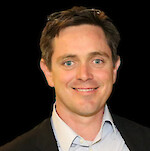
Dr. Simon Costanzo is a Science Integrator at the University of Maryland Center for Environmental Science in Cambridge MD. Simon’s career in environmental science over the past 20 years has been focused on developing and improving methods for the assessment, monitoring and management of aquatic, marine and terrestrial ecosystems. Simon has extensive experience in scientific data collection, synthesis, interpretation and communication. Simon’s career has provided a unique insight to a wide range of disciplines and stakeholder groups including government, academia and private industry. Dr. Costanzo obtained his academic training from University of Queensland in Australia (PhD).

